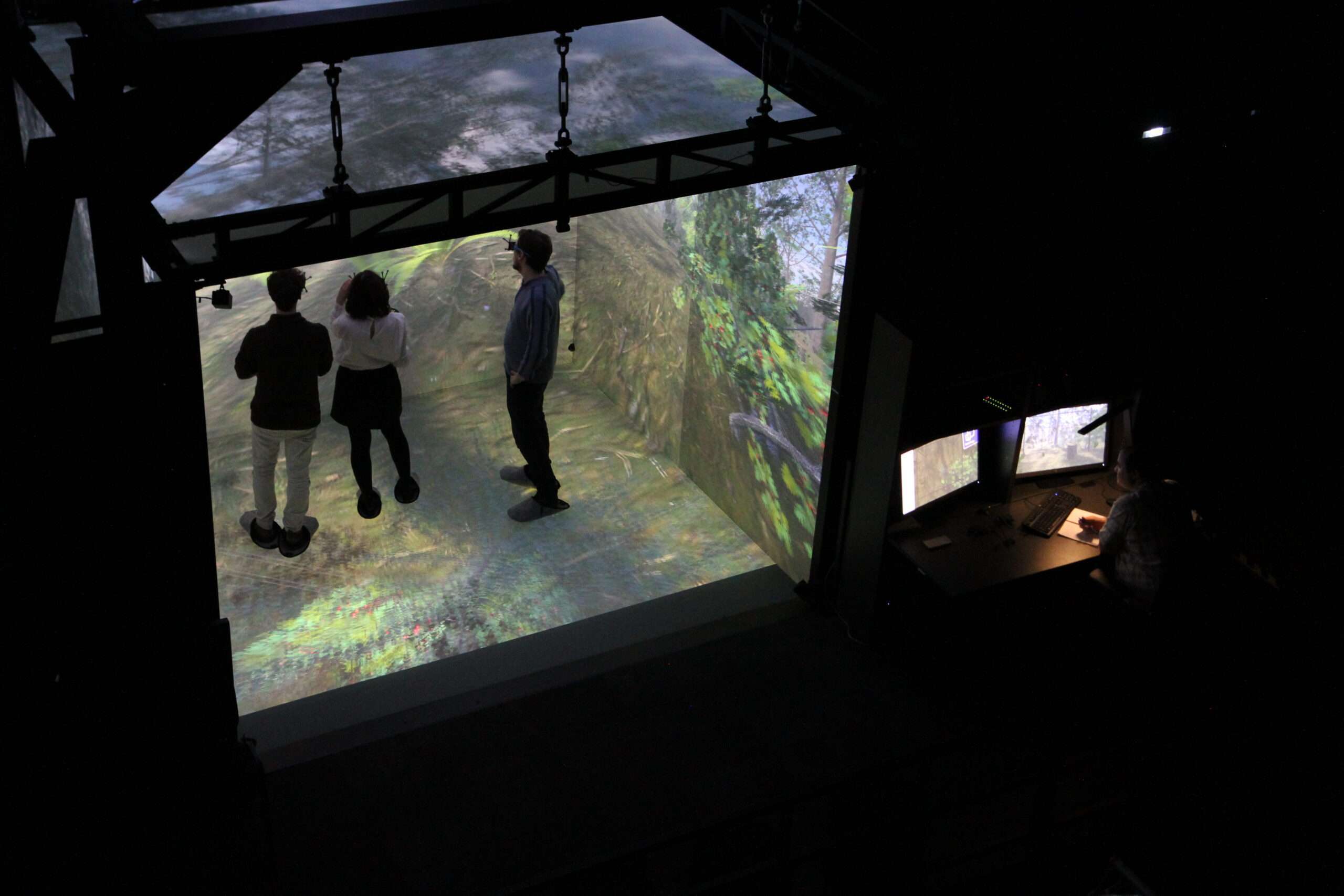How Does VR Help College and University Students?
As an advanced educational toolkit, VR has plenty to offer college and university students. How students benefit from VR should be the key consideration when adopting it, and ultimately, it is a means to an end and not the end in itself.
There are two broad aspects to how VR helps college and university students:
- VR allows them to absorb information differently, encouraging interaction, and
- It enables them to do things they would not otherwise be able to do.
How VR in Education Transforms Learning
VR is immersive and using it in learning can improve the retention of information. Retention is a core aspect of educational development. Learning retention is the ability to make information stick. Retention enables students to restore information in their long-term memory.
Because VR is so effective at engaging the brain in learning, it boosts retention.
The brain must first process information. It constantly filters and organises it, storing it in either short-term or long-term memory. To retain information effectively, the brain must somehow move it from short-term to long-term memory.
Repetition can help with this, as can senses such as sight and sound, that reinforce neural connections in the brain. Researchers have found that people recall things more effectively using VR applications, rather than using a computer or tablet.
Here, the key to improved information retention lies in being able to visualise and see in immersive space. VR gives participants a vivid sense of feeling what’s happening around them, engaging their senses. They create their own lived feelings digitally. This helps them focus better on the information they're both viewing and experiencing and makes the experience of learning more enjoyable. This, in turn, encourages engagement with the learning process.
Another major aspect of immersive VR is how it enables users to interact with their surroundings. It makes learning much less passive, which improves mood and motivation.The personal impact that VR makes helps educational content seem more immediate and relevant to the user, drawing them deeper into their area of study.
What Does VR Enable Students to Do?
In transforming 2D information into 3D experiences, VR enhances the learning experience, but it also provides students with a much broader set of resources.
The option is no longer one of being either in the classroom or on field studies. VR brings the outside world inside the learning zone and makes it feel real and relevant. Examples of VR in education cover a wide variety of subjects and disciplines.
The School of Art, Design and Architecture at the University of Huddersfield has a VR CAVE system, which it uses as part of its digital strategy for encouraging students to create immersive VR and digital content.
CAVE stands for Cave Automatic Virtual Environment. It is a system that works with HMDs and provides an immersive space as well as offering augmented reality functions.
STE Antycip has installed another VR CAVE system at the University of Lille, France. This system, known as TORE (The Open Reality Experience), has a range of applications covering various sectors including automotive, construction, design, energy and aeronautics.
At the University of Bath, we installed a new generation simulator, named VSimulators. This is an environmental chamber mounted on a moving, hydraulic platform. Using a virtual reality projection base, it can recreate environmental conditions for testing people’s behavioural reactions.
For engineering students at the French Les Arts et Métiers school, a multi-functional, advanced research tool is on their doorstep in the form of a five-sided VR CAVE system. This installation helps train engineers in industry, research, and socio-economics.
VR also applies to sports education and research. The École Normale Supérieure de Rennes (ENS Rennes) has its own three-sided VR theatre for immersive studies in sports communication and tactical team training.
The point about all these varied VR installations is that they give students new opportunities to access different and more immersive ways of studying and researching their subjects. They provide learning scenarios that would otherwise involve expensive fieldwork, on-site placements, or might otherwise simply not be feasible.
Why VR Learning is a Long-term Benefit for Students
Immersive VR in education offers students new ways of learning and a wider range of practical experiences. It can better prepare them for the future while helping them learn more effectively through improved retention of information and engagement with course content. It broadens the resources available to them and encourages greater interaction.
In terms of EdTech, VR is at the leading edge of educational technology, but it offers a highly practical set of tools designed to improve learning outcomes.
With our wealth of experience within the industry, ST Engineering Antycip helps organisations and higher educational institutions across Europe and beyond experience and unlock the benefits of VR.
To find out more about VR for education and research organisations, please contact us.




















